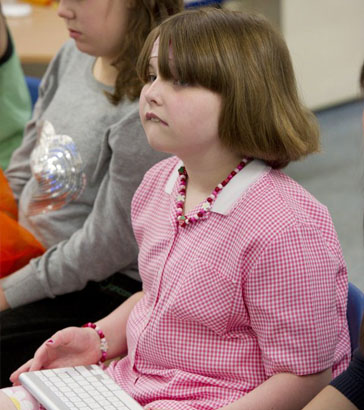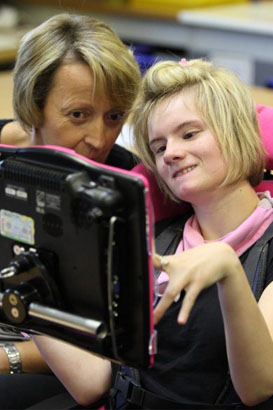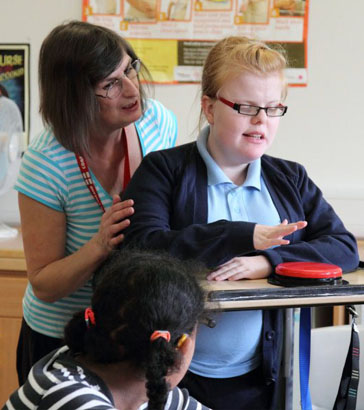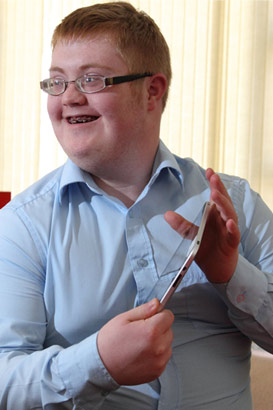(1896-1954)

Vygotsky emphasised children's learning is socially and culturally mediated through interactions with adults and peers with a higher skill level. His key ideas included:
- Mediated learning;
- Tools of the mind;
- Zone of proximal development;
- Dynamic assessment.
For an overview of Vygotsky's theories implemented with primary-aged children, click here.
Vygotsky felt that play was at the very heart of development: "In play a child always behaves beyond his average age, above
his daily behaviour; in play, it's as though he were a head taller than himself. As in the focus of a magnifying glass, play
contains all developmental tendencies in a condensed forma and is itself a major source of development "(Vygotsky).
Putnam, 2007
He felt that through play children:
- Make meaningful connections to new information
- Learn about social and cultural significance
- Extend their capacity for peer relationships.
(Putnam, 2007)

Vygotsky described the process of cognitive development as a transfer of social and cultural understanding from a more experienced adult (teacher) or peer:
- Existing knowledge in the mind of teacher
- Co-construction of meaning in the minds of the teacher and learner based upon their interaction (including resources)
- Internalised knowledge in the mind of the learner, who can then apply it independently and build on it.
For Vygotsky, this process was fundamental to all learning including 'voluntary attention, logical memory, and the formulation of concepts, and the development of volition' (Tilstone and Layton, 2004).

Children's tools for thinking depend on their existing understanding and their culture. As they develop and learn in interaction
with others, they will acquire an increasing skill set.
The first tools that help children expand attention, memory and thinking are physical ones: these may include tangible objects,
pictures of the objects and physical actions.
Later tools are internalised, including language, numbers, signs, plans, etc.
Cultural tools help children acquire 'higher mental functions' (Bodrova and Leong, 2001; Pound, 2008).

Vygotsky's zone of proximal development is 'the gap between what a child can do alone and what they can do with the help
of somebody more skilled or experienced' (Pound, 2008).
Focusing on the zone for teaching is 'a means of capturing both developed and developing abilities' (Poehner, 2010) of the
child. By intervening to support developing skills, the adult allows the child to externalise those skills, so they can be
shaped by adult and child together and then internalised by the child for effective, independent use.

Unlike summative assessment, dynamic assessment is not a snapshot of a child's level of attainment at a particular time.
It goes beyond formative assessment, which identifies a child's next step in learning.
Dynamic assessment encompasses the process of gaining the next developmental step and identifies:
- A child's current skill level;
- Their ultimate goal;
- What sub-skills they need to be taught so they can achieve the next developmental step;
- In what ways the teacher will structure their learning (approach and resources).
(Poehner, 2010)

Vygotsky developed his theories in relation to children with learning difficulties. For example, they have provided guidance for teachers in:
- Structuring sensory experiences to help children making sense of the world, especially for children with sensory impairment (Tilstone and Layton, 2004);
- Supporting children to gain skills based on their current capabilities;
- Developing peer mentoring among children with
SLD/PMLD/CLDD (Chalaye and Male, 2011)
Pamela Wolfberg's integrated playgroups provides some useful guidance on this area.
This appears to have had a significant impact on Gary as relatively soon after Gemma took over giving food, Gary began to meet Gemma's hand with his own as the crisp came near to his mouth and would then guide the crisp in.
Chalaye and Male, 2011
In Chaleye and Male (2011), the successful peer mentoring case study between a child with SLD and her peer, Gary, with PMLD, led to both children extending their skills across many activities. The first step in Gary's growing competence at snack time is described:
Based on Vygotsky's mediated learning, consider how you could set up peer mentoring for a child that you know. Draw up a plan, including a dynamic assessment of the child, giving the details of what will happen, and how the outcomes will be recorded.

Goswami, U. and Bryant, P. (2007) Children's Cognitive Development and Learning. London: Esmée Fairbairn Foundation / University of Cambridge.
Lindon, J. (2010) Understanding Child Development: Linking theory and practice. London: Hodder Arnold.

Bodrova, E. and Leong, D.J. (2001) Tools of the Mind: A case study of implementing the Vygotskian approach in American early childhood and primary classrooms (Innodata monographs 7). Geneva: UNESCO International Bureau of Education.
Chalaye, C. and Male, D. (2011) Applying Vygotsky's zone of proximal development and peer collaboration to pupils with profound and multiple learning difficulties and severe learning difficulties: two case studies, The SLD Experience, 61 (1), 13-18.
Poehner, M.E. (2010) Dynamic Assessment: A Vygotskian approach to Understanding and Promoting L2 Development. Springer.
Tilstone, C. and Layton, L. (2004) Child Development and Teaching Pupils with Special Educational Needs. London: Routledge.